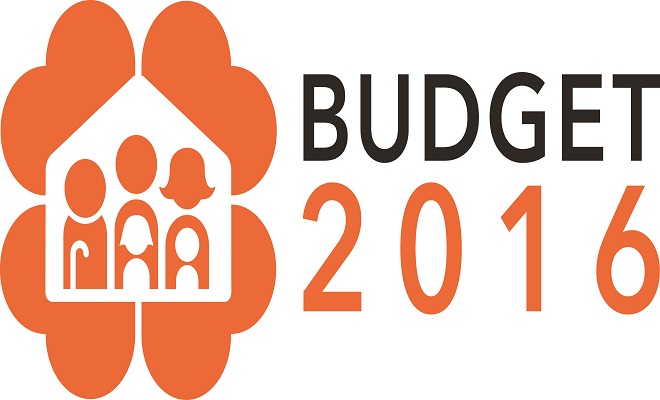
Insights + interviews
Singapore Budget 2016 For Active Agers
With the recent Budget 2016 Singapore announcement, here are some highlights to take note of.
Minister for Finance, Mr Heng Swee Keat delivered the Singapore Government’s Budget Statement for Financial Year 2016 in Parliament on Thursday, 24 March 2016, and among his announcements, we highlight those that would be of great interest to you the active ager.
Wage Offset Scheme
For employers, the Special Employment Credit (SEC) will be modified and extended for three years (to end of 2019). The SEC provides those who have workers aged 55 and above earning up to S$4,000 a month a wage offset. As for those who hire Singaporean workers aged 65 and above, they will continue to receive a wage offset of up to 8 per cent, this is on top of the wage offset of 3 per cent for the re-employment of workers aged 65 and above till the re-employment age is raised in 2017.
The SEC will be up to 5 per cent for workers aged 60 to 64, and up to 3 per cent for those aged 55 to 59. The SEC will cover about 340,000 workers, or about three in four older Singaporean workers, and to support this extension the government will top up SEC Fund by S$1.1 billion.
Adapt and Grow Initiative
To support the citizens amidst softening economic conditions and restructuring, the Ministry of Manpower (MOM) will enhance employment support through this initiative. This will help workers adapt to changing job demands and grow their skills. As for workers who may face greater difficulty in finding jobs, wage support schemes will be expanded to encourage firms to hire them. This will benefit more workers who may be affected by retrenchments or business restructuring. For mid-career jobseekers including those who are retrenched, the government will step up professional conversion programmes. New programmes will be launched in sectors such as Design, and ICT. Efforts to help these workers find a match in jobs with SMEs will also be enhanced.
The government also expects to increase the current outreach for PMETs; from 2,000 to over 4,000. MOM will commit an additional S$35 million a year from the Lifelong Learning Endowment Fund and Skills Development Fund to support these initiatives.
Enhancements to Workfare
The Workfare Income Supplement (WIS) scheme has encouraged workers who are 35-years-old and above to join the workforce, by supplementing their income and CPF savings. They can also upgrade their skills through the Workfare Training Support scheme and SkillsFuture. The government will be improving WIS for work done from January 2017 by doing these:
1. The qualifying income ceiling from the current average wage of S$1,900 a month will be raised to S$2,000 a month. WIS will continue to help the bottom 20% of workers, with some support also provided to those in the 30th income percentile. In total, WIS is expected to benefit about 460,000 Singaporeans.
2. WIS payouts will be increased. Eligible workers will receive higher payouts. Payouts will vary depending on their age and income. For example, workers earning S$1,000 to S$1,600 a month will receive increases in payouts of S$100 to S$500. Workers will continue to receive 40% of WIS in cash and 60% in CPF. e.g., an older worker aged 55 earning S$1,200 a month will now get a total of S$2,900 a year from WIS, with about S$1,200 in cash, and S$1,700 in CPF a year. He or she will then have S$3,500 more in the CPF account at age 65.
3. Simplifying the qualifying criteria for WIS. Today, to receive WIS, one has to work two out of three consecutive months, or three out of six consecutive months, or six out of 12 months in a year. WIS will now be paid for every month worked. By simplifying the qualifying criteria, workers can also look forward to receiving WIS payments more quickly – monthly rather than quarterly.
With these enhancements to WIS, the total budget will be about S$770 million a year.
Community Networks For Seniors
There will be more older folks amongst us in the coming years. The proportion of Singaporeans aged 65 and above will increase from one in eight today, to one in six by 2020, and one in four by 2030. In order to turn this into a source of strength, and make Singapore a model for successful ageing, the government has decided to address this issue with a pilot initiative called the Community Networks for Seniors, a network comprising of local stakeholders such as Voluntary Welfare Organisations, community volunteers, schools and businesses in the hope to empower all to age with dignity and vitality. With this community network, seniors can discover their health conditions earlier and manage them well. This initiative is also primed to connect those who are healthy and mobile to a wide range of activities, encouraging them to stay active, healthy and engaged in the community.
At its core, the network will have a small team of full-time officers, who will study the health and social needs of seniors and draw stakeholders together to provide coordinated support. This bodes well for caregivers of those seniors who require more help, such as frail elderly living alone, as they will get more targeted and coordinated health and social support under the networks.
These Community Networks for Seniors will be piloted in a few areas and will be scaled up eventually.
Silver Support
This is a major new feature in Singapore’s social security system. The aim of Silver Support is to support the bottom 20 per cent of Singaporeans aged 65 and above, with a smaller degree of support extended to cover up to 30 per cent of seniors. Though modest, it is a meaningful supplement to their retirement incomes, as those who qualify can get between S$300 to S$750. The first payout will be in July 2016, and it will be a double payout for the first two quarters of 2016 (April to June and July to September). The next two payouts will be made in end-September and end-December of 2016, with each being a payout for the coming quarter. In subsequent years, payouts will be made in March, June, September and December. The payouts will be made automatically, with the CPF notifying those who are eligible. More than 140,000 seniors will stand to benefit from the permanent scheme.
As for those who do not qualify for Silver Support, they will continue to benefit from substantial existing support schemes such as the GST Voucher, higher healthcare subsidies through MediShield Life and the Pioneer Generation Package, and eldercare subsidies.
One important point to note however; this scheme is not intended to substitute other sources of support, be it personal savings or family support. Silver Support also complements other forms of assistance these older folks may receive from existing schemes, whether it is Workfare, healthcare subsidies or the GST Voucher.
The three criteria to qualify for Silver Support are –
1. Lifetime Wages – Seniors who have not more than S$70,000 in total CPF contributions by age 55 will meet the first criterion.
2. Housing Type – Silver Support will cover the seniors who live in and own a 4-room or smaller HDB flat. Seniors who live in 5-room HDB flats, but do not own the flat, will also qualify if they meet the other criteria.
3. Household Support – Seniors in the bottom one-third of households where, on average, each member earns not more than S$1,100 per month, can benefit from Silver Support.









